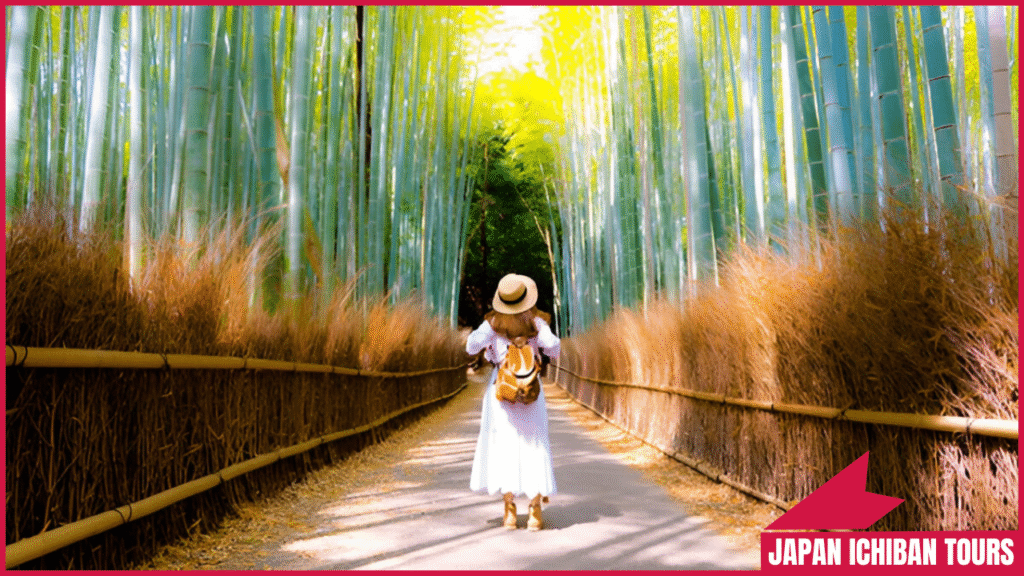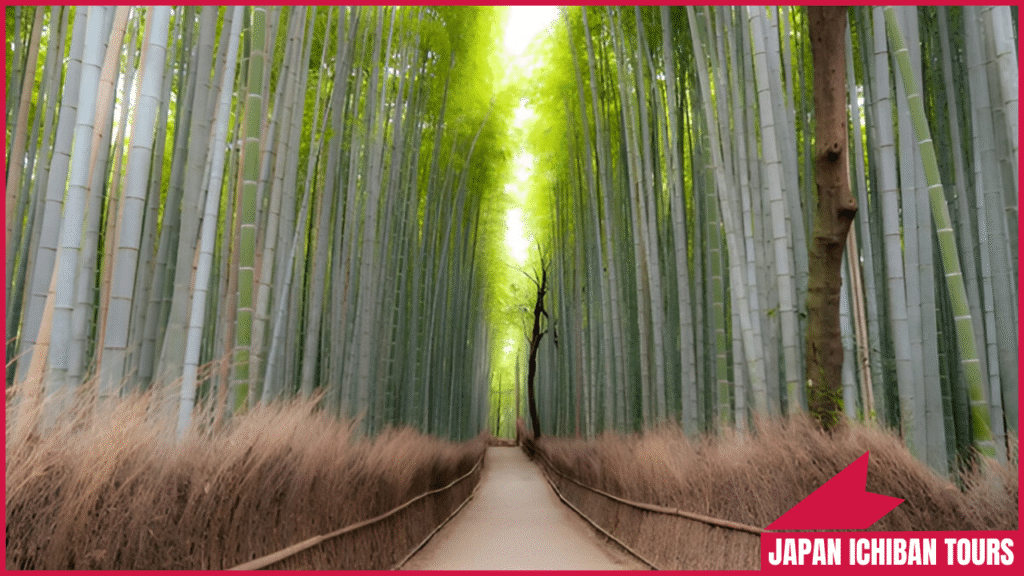
Japan in 2025 captivates with its seamless blend of ancient traditions, futuristic innovation, and breathtaking landscapes.
From Tokyo’s neon-lit streets to Kyoto’s tranquil temples and hidden coastal villages, Japan offers something for every traveler—whether you’re a culture enthusiast, foodie, or nature lover.
Why Japan is the ultimate destination, packed with insider tips, cultural insights, and curated experiences like the Kyoto & Osaka Amanohashidate and Ine Bay Day Trip.
Unlock Japan’s magic and plan your unforgettable adventure. Check More Here:- Explore Japan Like Never Before – Hidden Gems Revealed
Japan’s allure lies in its ability to harmonize ancient heritage with cutting-edge technology. Wander through Kyoto’s historic shrines one day and explore Tokyo’s futuristic districts the next. This unique balance, paired with unparalleled hospitality and safety (Japan’s crime rate is 80% lower than the global average), makes it a dream destination for travelers of all kinds.
Japan’s cultural heritage is a magnet for travelers seeking depth. Join a Kyoto tea ceremony (~$20–$40) to experience the art of matcha preparation, rooted in Zen philosophy. Or dive into vibrant matsuri (festivals) like Tottori’s Shan-Shan Festival (August) with its umbrella dances or Wakayama’s Kishu Toshogu Festival (October) featuring samurai processions (free entry, ~$10–$20 for food stalls).
Japan’s 80,000+ shrines and temples offer tranquility and history. Kyoto’s Kinkaku-ji (Golden Pavilion, ~$4) dazzles with its golden facade, while Fushimi Inari’s red torii gates (free) invite peaceful hikes. In Wakayama, Kumano Hongu Taisha on the Kumano Kodo trails (free) provides a spiritual retreat.
| Cultural Site | Location | Cost | Highlight | Why Visit |
|---|---|---|---|---|
| Kinkaku-ji | Kyoto | $4 | Golden temple | Iconic beauty |
| Fushimi Inari | Kyoto | Free | Torii gates | Spiritual hike |
| Kumano Hongu | Wakayama | Free | Pilgrimage | UNESCO heritage |

Japan’s street food is a culinary adventure. In Osaka’s Dotonbori alleys, savor takoyaki (octopus balls, ~$5) or kushikatsu (skewers, ~$1–$2). These affordable bites pack authentic flavors, perfect for foodies on a budget.
Each region offers unique flavors. In Tottori, try crab sushi (~$10); in Kyoto, indulge in kaiseki (multi-course dining, ~$30–$50). During the Kyoto & Osaka Amanohashidate and Ine Bay Day Trip, sample fresh seafood in Ine’s floating restaurants (~$15–$30).
Japan’s convenience stores (7-Eleven, Lawson, FamilyMart) redefine fast food with onigiri (~$2), bento boxes (~$5), and seasonal treats like sakura mochi (~$3). They’re ideal for quick, high-quality meals.
| Food Type | Location | Cost | Must-Try | Where to Find |
|---|---|---|---|---|
| Takoyaki | Osaka | $5 | Octopus balls | Dotonbori alleys |
| Kaiseki | Kyoto | $30–$50 | Multi-course | Gion restaurants |
| Onigiri | Nationwide | $2 | Rice balls | 7-Eleven, Lawson |
Ine’s boathouses, perched above the Sea of Japan, create a serene village vibe. Accessible via the Kyoto & Osaka Amanohashidate and Ine Bay Day Trip, Ine draws ~2,100 visitors monthly, offering kayaking (~$20) and guesthouse stays (~$80/night).
The UNESCO-listed Kumano Kodo in Wakayama offers pilgrimage trails through cedar forests and shrines. Hike 2–4 hours (free) or stay in shukubo (temple lodgings, ~$60 with meals) for a spiritual escape.
Near Lake Biwa, Omihachiman’s canals and merchant houses evoke Japan’s past. Take a boat ride (~$10) or visit sake breweries (~$5 tastings). The Sagicho Fire Festival (March) is a cultural gem.
Tokyo blends futuristic districts with retro charm. Explore Shibuya Crossing (free), Senso-ji Temple in Asakusa (free), and Koenji’s vintage shops (~$5–$20 for kimonos or records). Dine at Ameya-Yokocho for gyoza (~$5–$10).
Kyoto’s cultural treasures include Kinkaku-ji (~$4), Arashiyama’s Bamboo Grove (~$5), and Nishiki Market (~$2–$5 for snacks). Stroll Pontocho Alley for riverside dining (~$15–$30).
Osaka’s Dotonbori alleys offer kushikatsu (~$1–$2) and okonomiyaki (~$10). Visit Osaka Castle (~$5) and Umeda Sky Building (~$10) for skyline views.
| City | Must-See | Cost | Highlight | Dining Tip |
|---|---|---|---|---|
| Tokyo | Shibuya, Koenji | Free–$20 | Urban vibe, retro shops | Gyoza at Ameya-Yokocho |
| Kyoto | Kinkaku-ji, Nishiki | $2–$15 | Temples, markets | Matcha at Nishiki |
| Osaka | Dotonbori, Castle | $1–$10 | Street food, history | Okonomiyaki in alleys |
Use a JR Pass (~$300 for 14 days) for Shinkansen and regional trains, or regional passes like JR Kansai-Hiroshima (~$90 for 5 days). IC cards (Suica/Pasmo, ~$20) cover local transit.
Choose capsule hotels (~$20–$30/night), hostels (~$15–$25), or minshuku (~$50–$80). Shukubo in Wakayama (~$60) offer temple stays with meals.
Purchase an eSIM (Airalo, Ubigi, ~$10–$20 for 1–2 GB daily data) for navigation and translation. Download Google Translate and Maps.me for offline access.
| Travel Hack | Details | Cost | Benefit | Where to Apply |
|---|---|---|---|---|
| JR Pass | Unlimited Shinkansen | $300 (14 days) | Saves ~30% | Nationwide |
| eSIM | 1–2 GB daily data | $10–$20 | Easy navigation | Airports, online |
| Takkyubin | Luggage delivery | $15–$25 | Hands-free travel | Hotels, konbini |

Hidden gems like Kumano Kodo have limited English signage. Use offline apps like Maps.me or carry a phrasebook. Koban (police boxes) offer friendly assistance.
Visit popular sites early (7–9 AM) or join guided tours like the Kyoto & Osaka Amanohashidate and Ine Bay Day Trip for quieter access. Use Navitime’s congestion tracker.
Japan’s lost-and-found system is efficient. Report items at stations or koban (free, ~$5–$10 for mailed items).
Japan’s low crime rate and omotenashi (hospitality) make it welcoming for all travelers. Locals often go out of their way to assist, even with language barriers.
Spring (March–April) brings cherry blossoms, while autumn (October–November) offers vibrant foliage. Both seasons are ideal for festivals and hidden gem exploration.
Japan’s infrastructure supports diverse travelers. Wheelchair-accessible trains, English signage in cities, and translation apps make navigation easy.
Japan is the ultimate destination in 2025 for its rich culture, diverse cuisine, and stunning landscapes. From Tokyo’s urban buzz to Ine’s serene boathouses, experiences like the Kyoto & Osaka Amanohashidate and Ine Bay Day Trip unlock hidden treasures. Embrace local customs, plan smart, and embark on a journey that blends tradition, flavor, and adventure.
What makes Japan a top travel destination in 2025?
Japan’s blend of ancient culture, modern innovation, safe environment, and diverse landscapes appeals to every traveler.
How can I experience Japan’s culture authentically?
Join tea ceremonies (~$20–$40) or attend festivals like Tottori’s Shan-Shan (free) for immersive experiences.
What are the best budget dining options?
Grab konbini meals (~$2–$5) or street food like takoyaki (~$5) in Osaka’s alleys for quality and affordability.
Why visit hidden gems like Ine no Funaya?
Ine offers unique boathouse architecture and tranquility, with fewer crowds than Kyoto or Tokyo.
What’s the best time to visit Japan?
Spring (March–April) and autumn (October–November) offer mild weather and stunning scenery, perfect for cultural and natural exploration.

Discover Japan Like Never Before 🇯🇵








Copyright © 2025 Japan Ichiban Tours | made with ❤️ by ideavire.com
Please select a template first

1 Comment
Where to Stay in Shinjuku: Top 5 Areas & Hotels in Tokyo · August 10, 2025 at 9:43 pm
[…] This guide highlights the top five areas to stay in Shinjuku, each with its unique vibe, along with recommended hotels to suit various budgets and travel styles. From skyscraper luxury to budget-friendly gems, here’s your roadmap to Shinjuku’s best stays. Check More Here:- Why Is Japan the Ultimate Destination for Every Traveler? […]